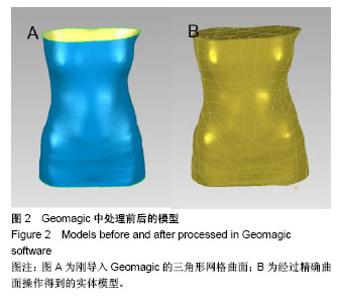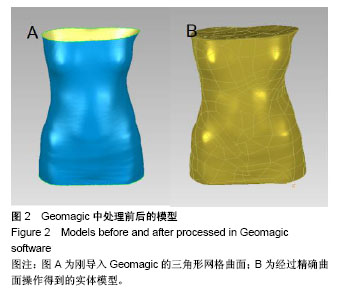| [1] Nachemson AL, Peterson LE. Effectiveness of treatment with a brace in girls who have adolescent idiopathic scoliosis. A prospective, controlled study based on data from the Brace Study of the Scoliosis Research Society. J Bone Joint Surg Am. 1995;77(6): 815-822.[2] Reading R. Effects of bracing in adolescents with idiopathic scoliosis. Child. 2014;40(1): 146-147.[3] D'Amato CR, Griggs S, Mccoy B. Nighttime bracing with the Providence brace in adolescent girls with idiopathic scoliosis. Spine. 2001;26(18): 2006-2012.[4] Katz DE, Herring JA, Browne RH, et al. Brace wear control of curve progression in adolescent idiopathic scoliosis. J Bone Joint Surg Am. 2010;92(6): 1343-1352.[5] Weinstein SL, Dolan LA, Wright JG, et al. Effects of bracing in adolescents with idiopathic scoliosis. N Engl J Med. 2013;369(16): 1512-1521.[6] Gabos PG, Bojescul JA, Bowen JR, et al. Long-term follow-up of female patients with idiopathic scoliosis treated with the Wilmington orthosis. J Bone Joint Surg Am. 2004;86-A(9): 1891-1899.[7] Brox JI, Lange JE, Gunderson RB, et al. Good brace compliance reduced curve progression and surgical rates in patients with idiopathic scoliosis. Eur Spine J. 2012;21(10): 1957-1963.[8] Rahman T, Bowen JR, Takemitsu M, et al. The association between brace compliance and outcome for patients with idiopathic scoliosis. J Pediatr Orthop. 2005;25(4): 420-422.[9] Roaf R. Vertebral growth and its mechanical control. J Bone Joint Surg. 1960;42-B(1): 40-59.[10] Olafsson Y, Saraste H, Söderlund V, et al. Boston brace in the treatment of idiopathic scoliosis. J Pediatr Orthop. 1995;15(4): 524-527.[11] Lonstein JE, Winter RB. The Milwuakee brace for the treatment of adolescent idiopathic scoliosis: A review of 1020 patients. J Bone Joint Surg. 1994;76(8): 1207-1221.[12] 包岳丰,邱勇,朱丽华,等. Mil waukee支具治疗青少年特发性脊柱侧凸的疗效分析与应用体会[J]. 中国脊柱脊髓杂志, 2001,11(4): 201-203.[13] Price CT, Scott DS, Jr RF, et al. Nighttime bracing for adolescent idiopathic scoliosis with the Charleston Bending Brace: long-term follow-up. J Pediatr Orthop. 1997;17(6): 703-707.[14] Trivedi JM, Thomson JD. Results of Charleston bracing in skeletally immature patients with idiopathic scoliosis. J Pediatr Orthop. 2001; 21(3): 277-280.[15] Janicki JA, Poekochert C, Armstrong DG, et al. A comparison of the thoracolumbosacral orthoses and providence orthosis in the treatment of adolescent idiopathic scoliosis: results using the new SRS inclusion and assessment criteria for bracing studies. J Pediatr Orthop. 2007;27(4): 369.[16] Yrjã Nen T, Ylikoski M, Schlenzka D, et al. Effectiveness of the Providence nighttime bracing in adolescent idiopathic scoliosis: a comparative study of 36 female patients. Eur Spine J. 2006;15(7): 1139-1143.[17] Climent J, Sanchez J. Impact of the type of brace on the quality of life of Adolescents with Spine Deformities. Spine. 1999;24(18):1903.[18] 魏虹,梁雁,王慕逖. 矮小儿童的生长激素-胰岛素样生长因子轴功能的检查[J]. 中华儿科杂志, 2005, 43(2): 99-103.[19] Raux S, Kohler R, Garin C, et al. Tridimensional trunk surface acquisition for brace manufacturing in idiopathic scoliosis. Eur Spine J. 2014;23(4): 419-423.[20] Cobetto N, Aubin CE, Clin J, et al. Braces optimized with computer-assisted design and simulations are lighter, more comfortable, and more efficient than Plaster-Cast Braces for the treatment of adolescent idiopathic scoliosis. Spine Deform. 2014;2(4): 276-284.[21] Weiss HR, Tournavitis N, Nan X, et al. Workflow of CAD / CAM scoliosis brace adjustment in preparation using 3D printing. Open Med Inform J. 2017;11(1): 44-51.[22] Sattout A, Clin J, Cobetto N, et al. Biomechanical assessment of providence nighttime brace for the treatment of adolescent idiopathic scoliosis. Spine Deform. 2016;4(4): 253-260. |



